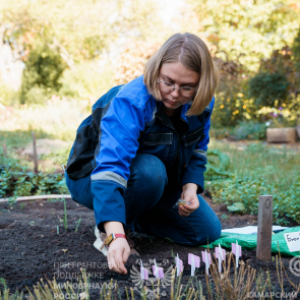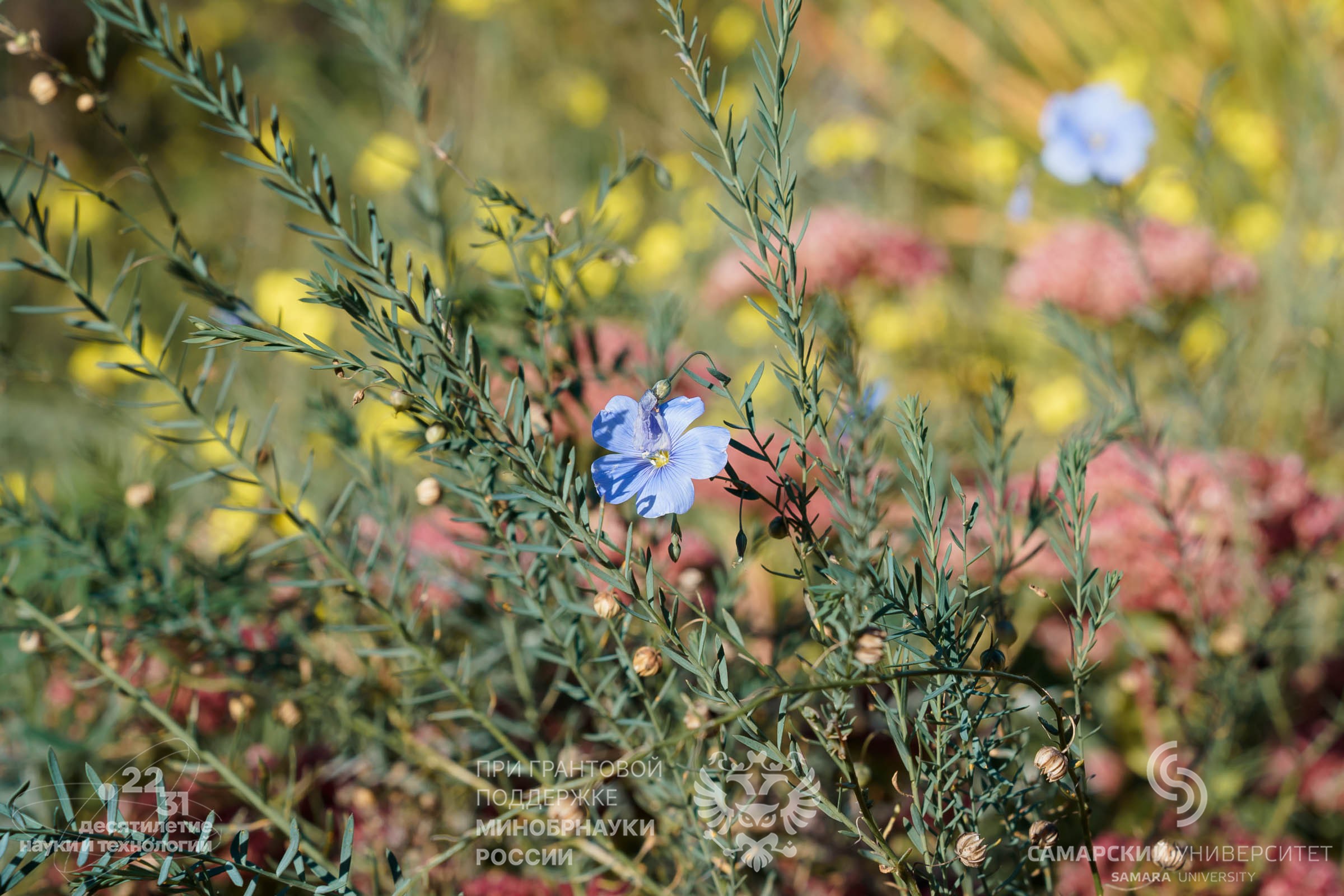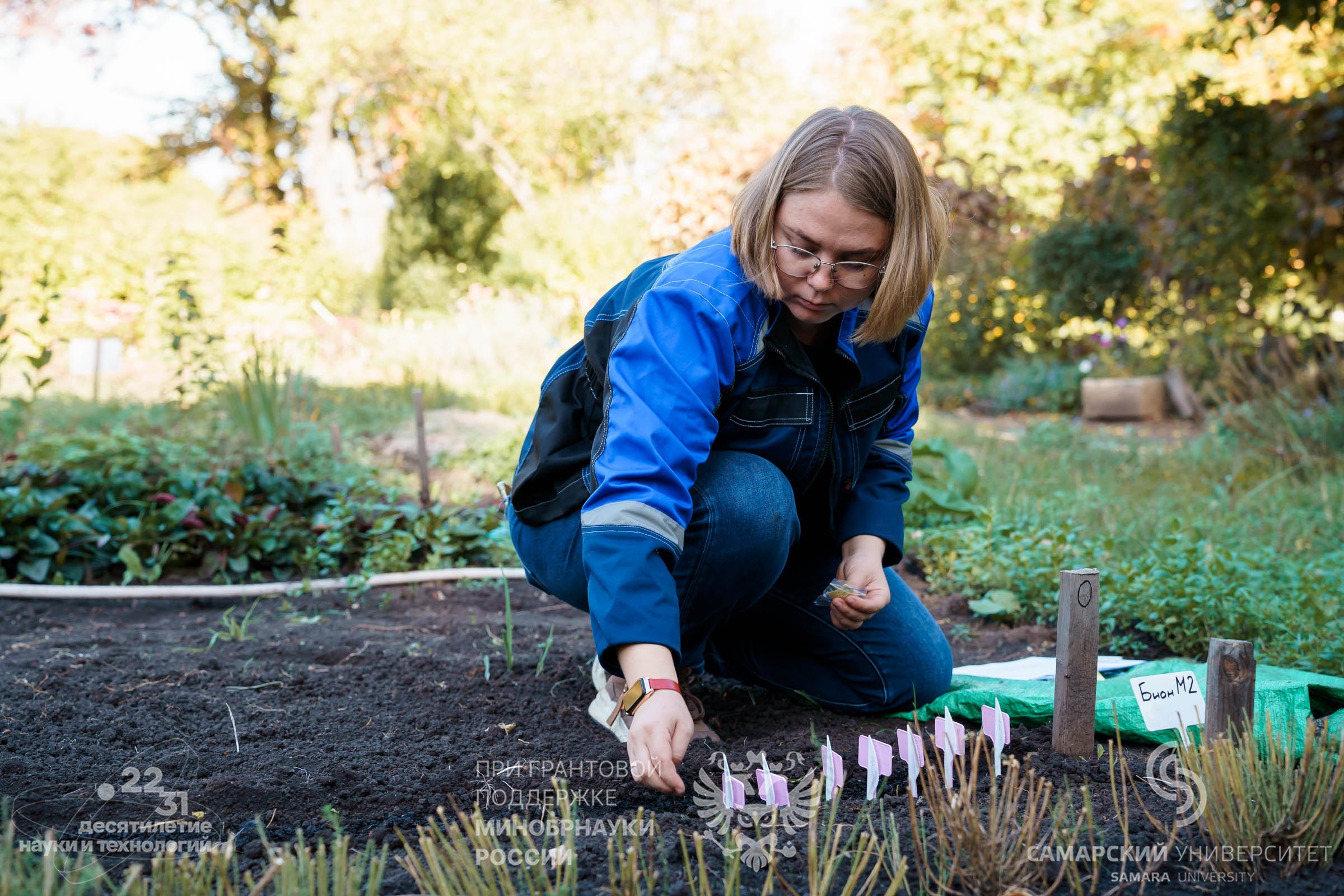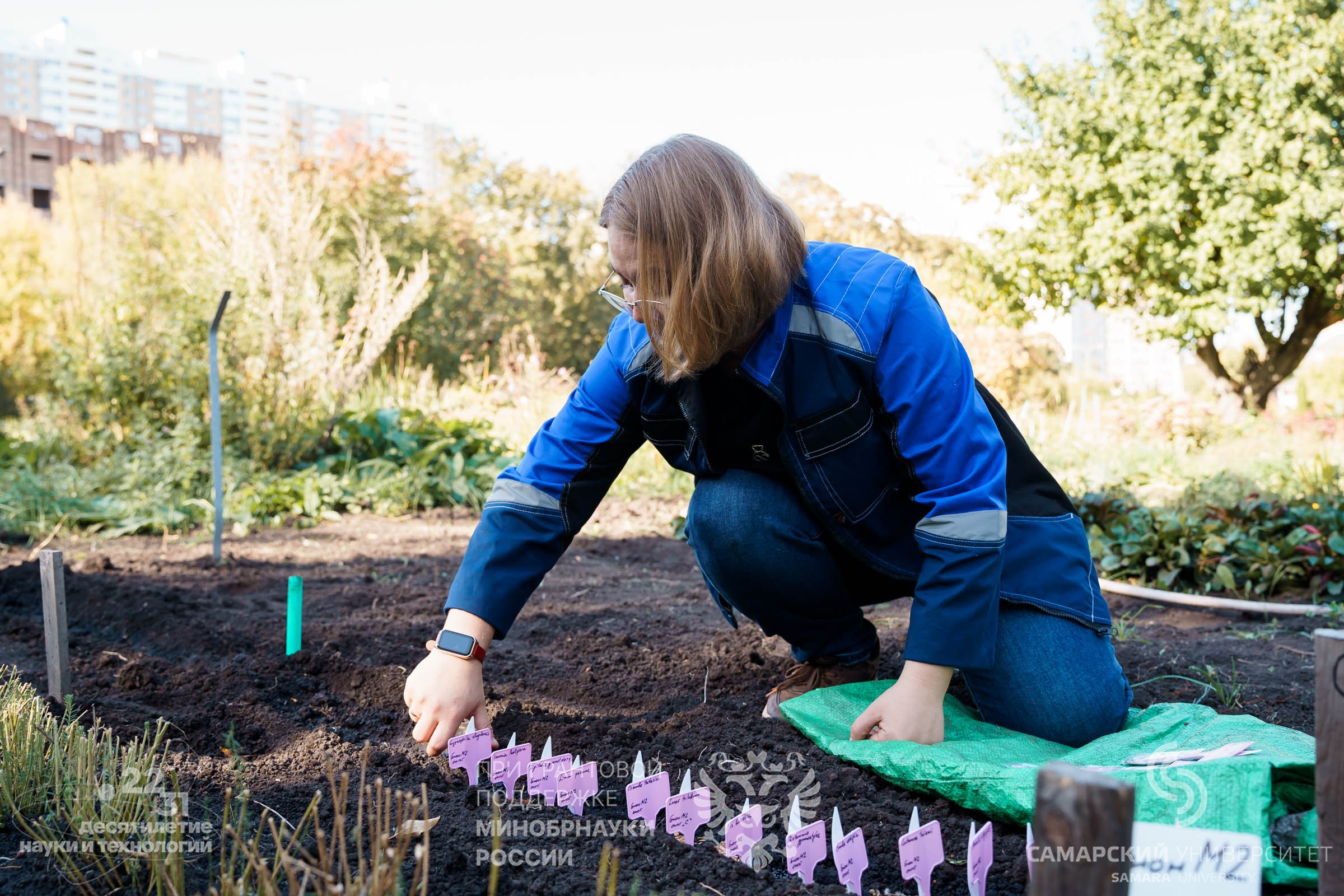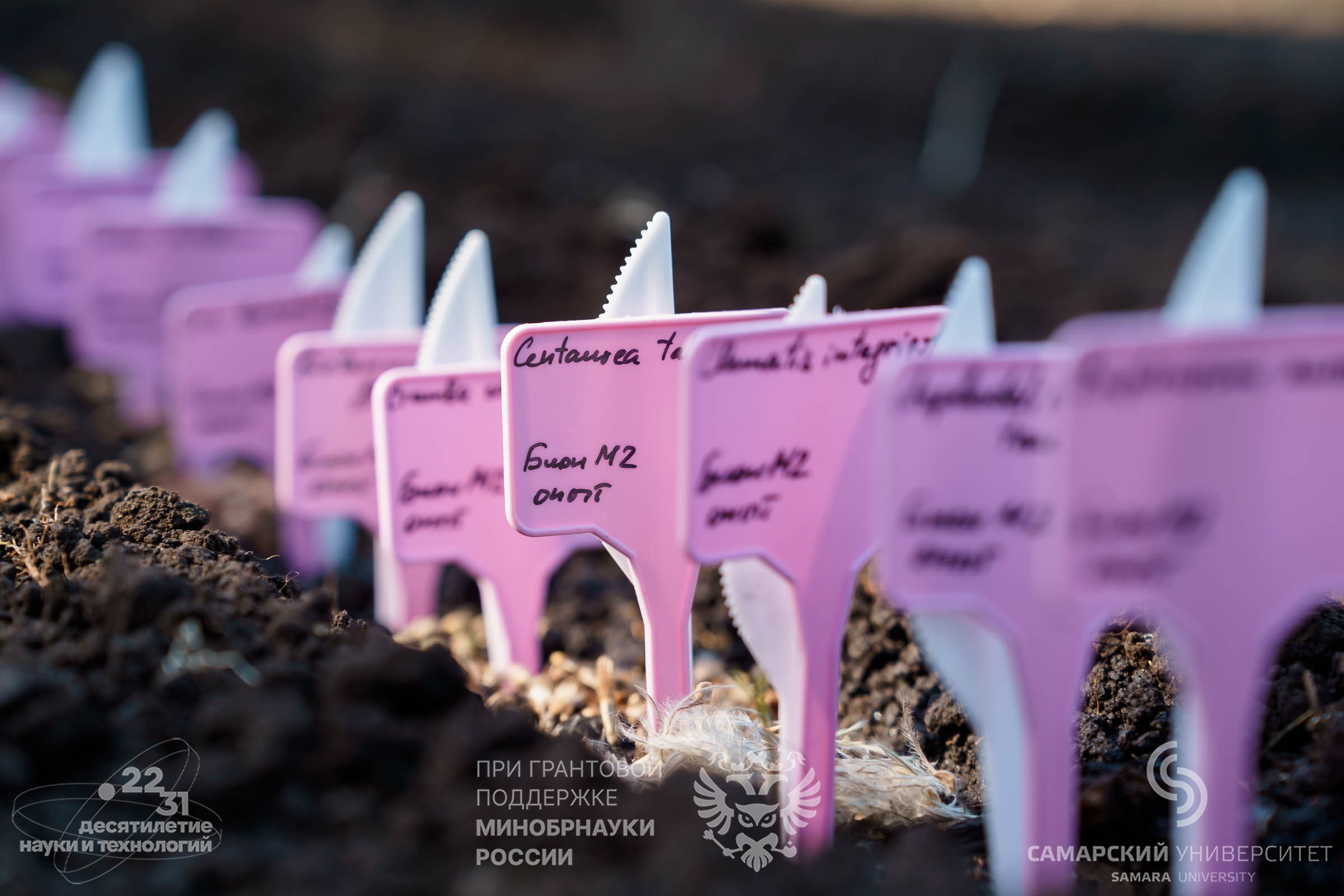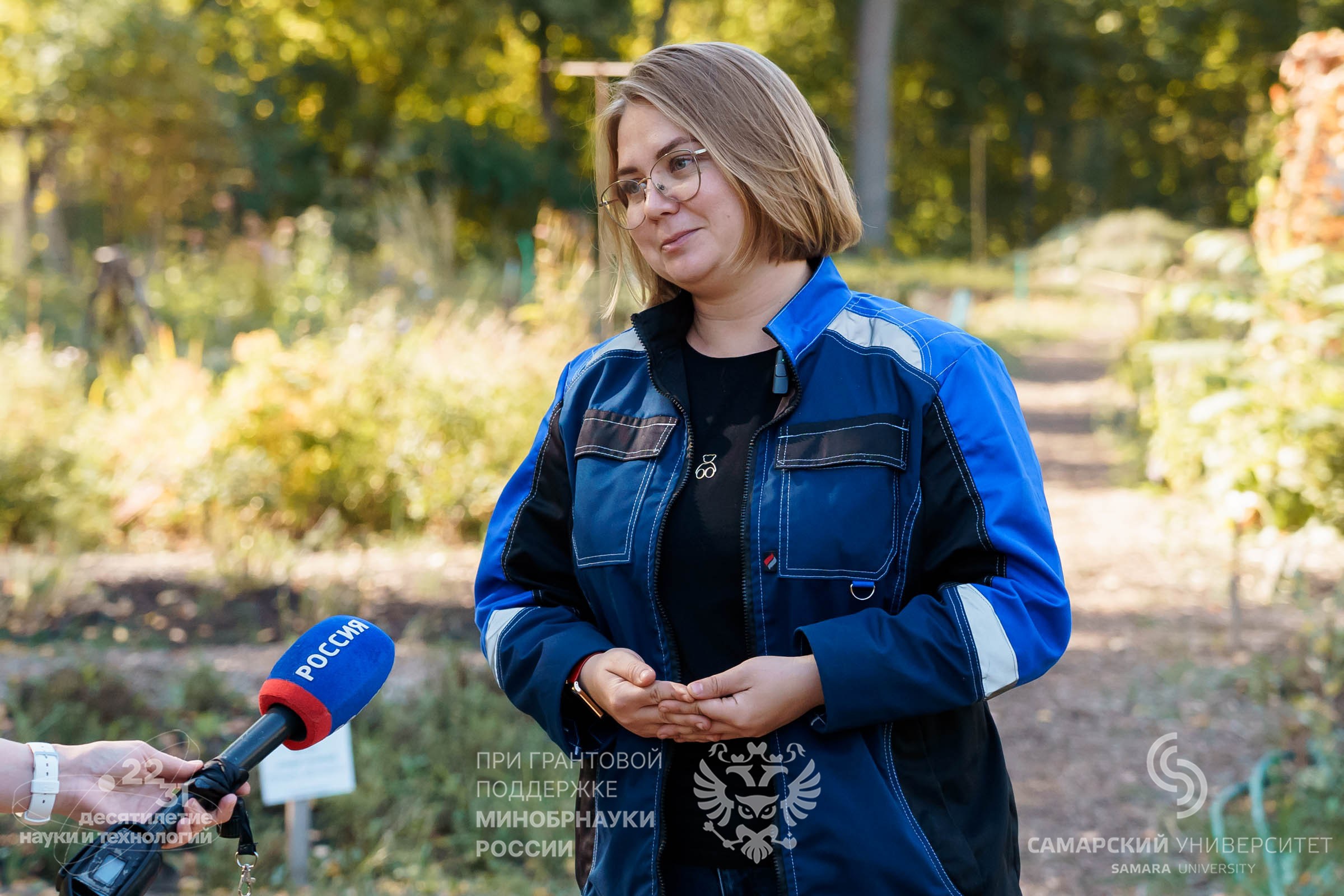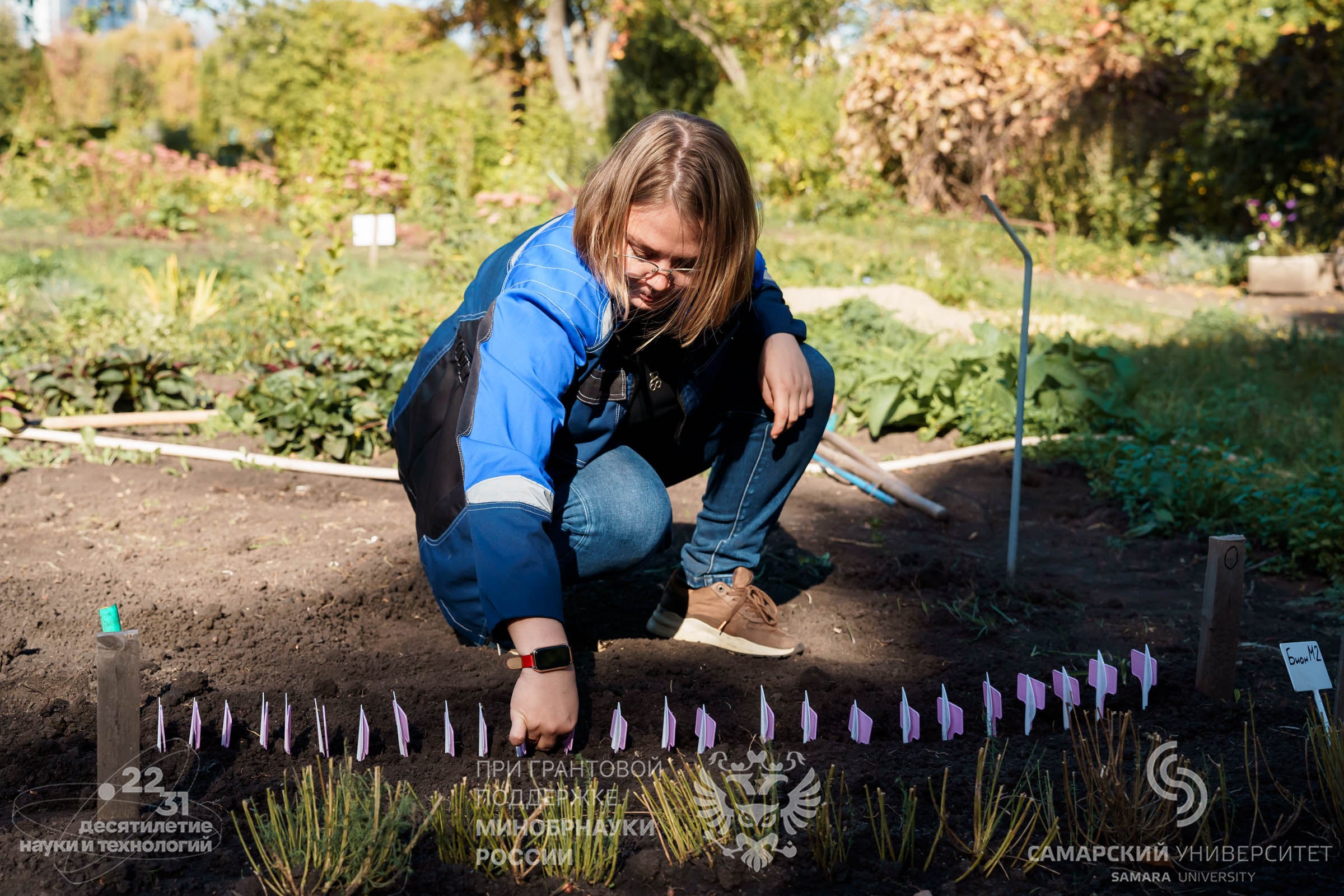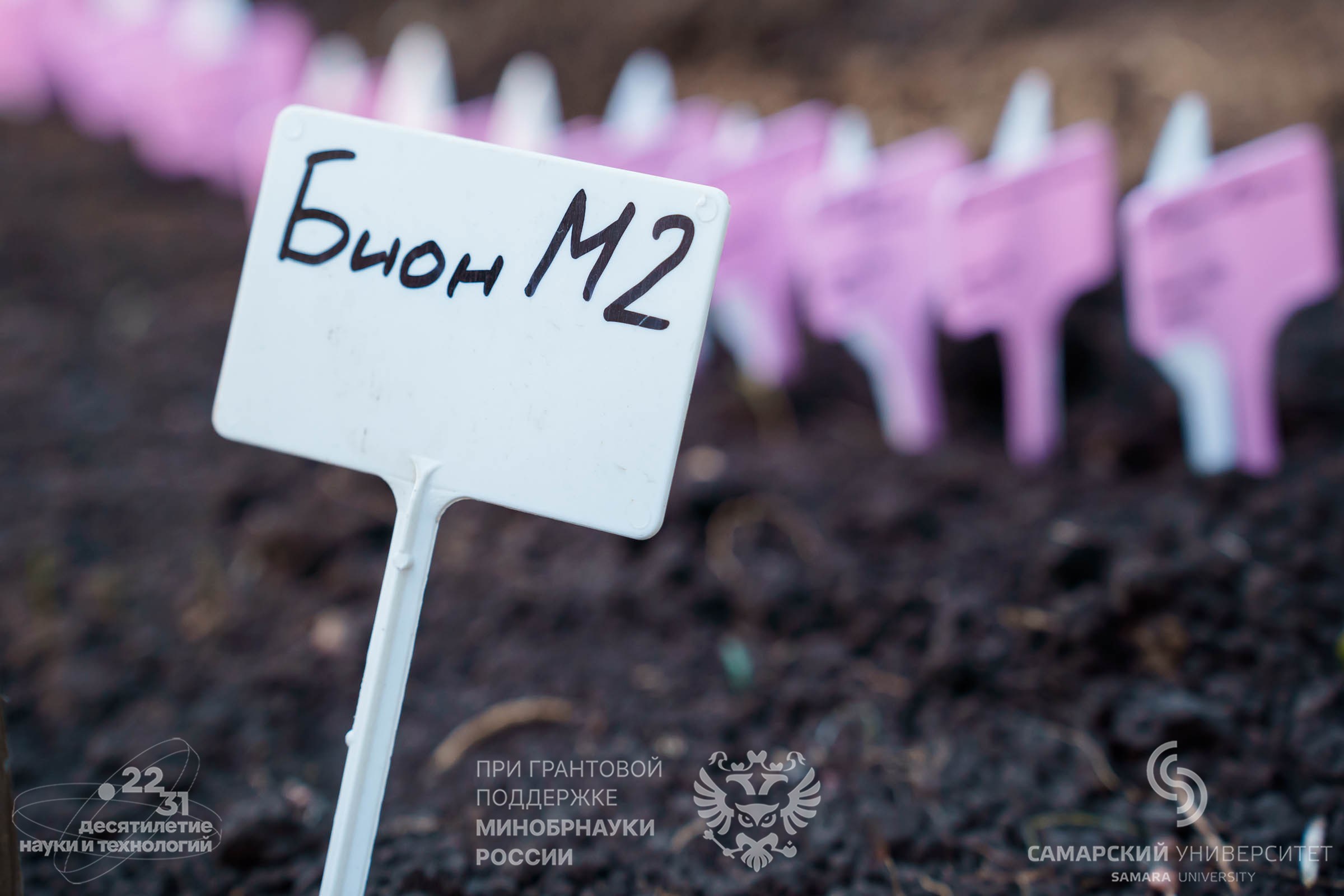Biologists of Samara University has launched a program for post-flight research of cosmonaut seeds – a batch of seeds of rare plants from the Samara Region that participated in a space experiment aboard the Bion-M orbital biolab No. 2. After returning to the Earth, the seeds were delivered to Samara.
Some of the cosmonaut seeds were sown today, on September 24, in the Botanic Garden of the University on a special “space bed” – earlier, 12 years ago, seeds that flew on the first Bion-M in 2013 were already sown here.
“Today, in the Botanic Garden, in a special “space” section, the sowing of seeds that participated in the flight on the Bion-M No. 2 spacecraft took place. The seeds returned to us in Samara for post-flight study and further experiments. After space testing, they will have to endure Earth's winter conditions to germinate in the spring. It's worth noting that some of the control group's seeds, which hadn't been flown into space, were also sown in open ground today – so-called 'backup' seeds that remained on Earth during the flight,” Elena Kayurova, an agronomist in the flora department of the Botanic Garden of Samara University said.
According to her, in addition to the two open-ground groups that will be grown in the “space bed” at the Botanic Garden, two laboratory groups have also been formed: the cosmonaut seeds and the duplicate seeds will be sown separately in the university laboratory. Their conditions will, of course, be greenhouse-like, unlike their “colleagues” from the Botanic Garden, but they will undergo numerous laboratory studies at various stages of growth and development. According to scientists, data on four groups of seedlings will provide a more accurate picture of the influence of space factors. By the way, upon arrival in Samara, the cosmonaut seeds underwent a control weigh-in at the university. It can't be said that they gained much weight during the flight, but their weight did increase slightly – almost to the margin of error, but still.
“We will study, analyze, and compare the development of seedlings. Post-flight studies will provide us with new factual data in the field of space biology and new knowledge about how being in a specific orbit in space affects seed germination and subsequent plant development. Replicating the experiment in a laboratory setting will allow us to isolate or minimize the influence of climatic factors such as cold and precipitation. This will allow us to more accurately determine whether space factors are the cause of a particular phenomenon in seedling development,” Elena Kayurova noted.
About the scientific mission and the “seed-astronaut squad”
The scientific spacecraft Bion-M No. 2 was launched on August 20 from the Baikonur Cosmodrome. 75 mice, about 1,500 fruit flies, as well as fungi, bacteria, cellular tissue, and seeds of 25 rare plants from the Samara Botanic Garden, were sent into space for a month. On September 19, the orbital laboratory's descent module with living organisms on board successfully landed in the steppes of the Orenburg region.
The main goal of the scientific program of the Bion-M No. 2 apparatus was to study the biological impact of weightlessness and high levels of cosmic radiation on living organisms at the systemic, organ, cellular and molecular levels. Along with scientists from all over Russia, the staff of the University’s Faculty of Biology, Botanic Garden, Institute of Space Instrumentation Engineering, and Research Institute of Modeling and Control Problems participated in preparing the scientific mission.
For the flight, Samara University assembled an impressive “seed-cosmonaut squad,” comprising approximately 4,500 seeds from 25 rare plants from the Botanic Garden, listed in the Red Data Books of the Russian Federation and the Samara Region. The seeds were selected following the results of the thorough study of their health: they were literally shone through and examined under the microscope.
Among those selected for the flight, there were, for example, seeds of plants, such as Bupleurum aureum, Schrenck’s tulip, fern-leaf peony, Laser trilobum, Persian poppy, Gypsophila zhegulensis, Asphodelina Krymskaya, pasqueflower, heartleaf crambe and some other species of red-book rare plants.
The space batch also included seeds of two plants to be grown from seeds that flew onboard the first Bion-M in 2013, and successfully germinated upon return to Earth: these are seeds of Dianthus andrzejowskianus and perennial flax. The “cosmonauts’ grandchildren”, that is, the seeds of those plants in their second generation, flew into orbit. Following the new flight, scientists will attempt to analyze the effect of repeated exposure to space factors on plant generations.
The seeds of different plant species vary greatly in size – from 1 mm, like those of the large-flowered foxglove, to 8 mm in the spiny dogfish, so when selecting plant species, scientists were guided, among other things, by the volume that the potential “astronauts” would occupy. To accommodate the seeds, a special mini-compartment measuring 16x16x10 cm was provided on board the Bion-M No. 2, and grippers – polyethylene bags with a zip-lock fastener – were proposed as collective “spacesuits.”
Over the long history of space exploration, seeds of various plants have been in orbit more than once. The idea of growing plants in space was suggested by Konstantin Tsiolkovsky, the founder of modern cosmonautics, and in 1960, together with Belka and Strelka, onboard the “Sputnik-5” spacecraft, not only forty nameless mice, but also onion seeds, peas, wheat and corn flew into space. Currently, no one is surprised by space gardens and plant beds in orbit: lettuce and peas, wheat and radish and other edible plants have been successfully grown in space for long.
The experiment conducted by Samara University’s scientists is unique because the object of their study are seeds of not agricultural crops, but ones of natural flora, especially rare species, and some of them are “descendants” of the seeds that have already been in space. Rare plants of the natural flora are physiologically more sensitive to environmental changes than resistant types of agricultural plants, which can withstand drought, frost, and insect pests. That is why rare plants of the natural flora, like that fairy princess on the pea, will be able to show the influence of space flight factors much more vividly and more expressly.
Field experiments conducted with seeds after the flight of the first Bion-M in 2013 showed that space undoubtedly had a stimulating effect on a number of plant species: the soil germination of seeds of the plants was 70–80%, compared to 30–50% germination for seeds that did not fly into space. Besides, unusually large specimens to be in development noticeably ahead of the plants from the reference group were observed in the groups of plants-cosmonauts.
The material is prepared with the support of Russia’s Ministry of Education and Science, in the framework of the Decade of Science and Technology.
For reference
Bion is a series of domestic spacecrafts for biological research. From 1973 to 1996, 11 satellites of the series were launched into outer space; several-dozen types of biological objects – unicellular organisms, plants, insects, fish, amphibians, turtles, rats, monkeys – visited space. In April 2013, the first upgraded biological satellite Bion-M was launched. Its “crew” included mice, desert rats, geckos, snails, crustaceans, fish and various microorganisms.
Photo by: Olesya Orina
 RU
RU  EN
EN  CN
CN  ES
ES 